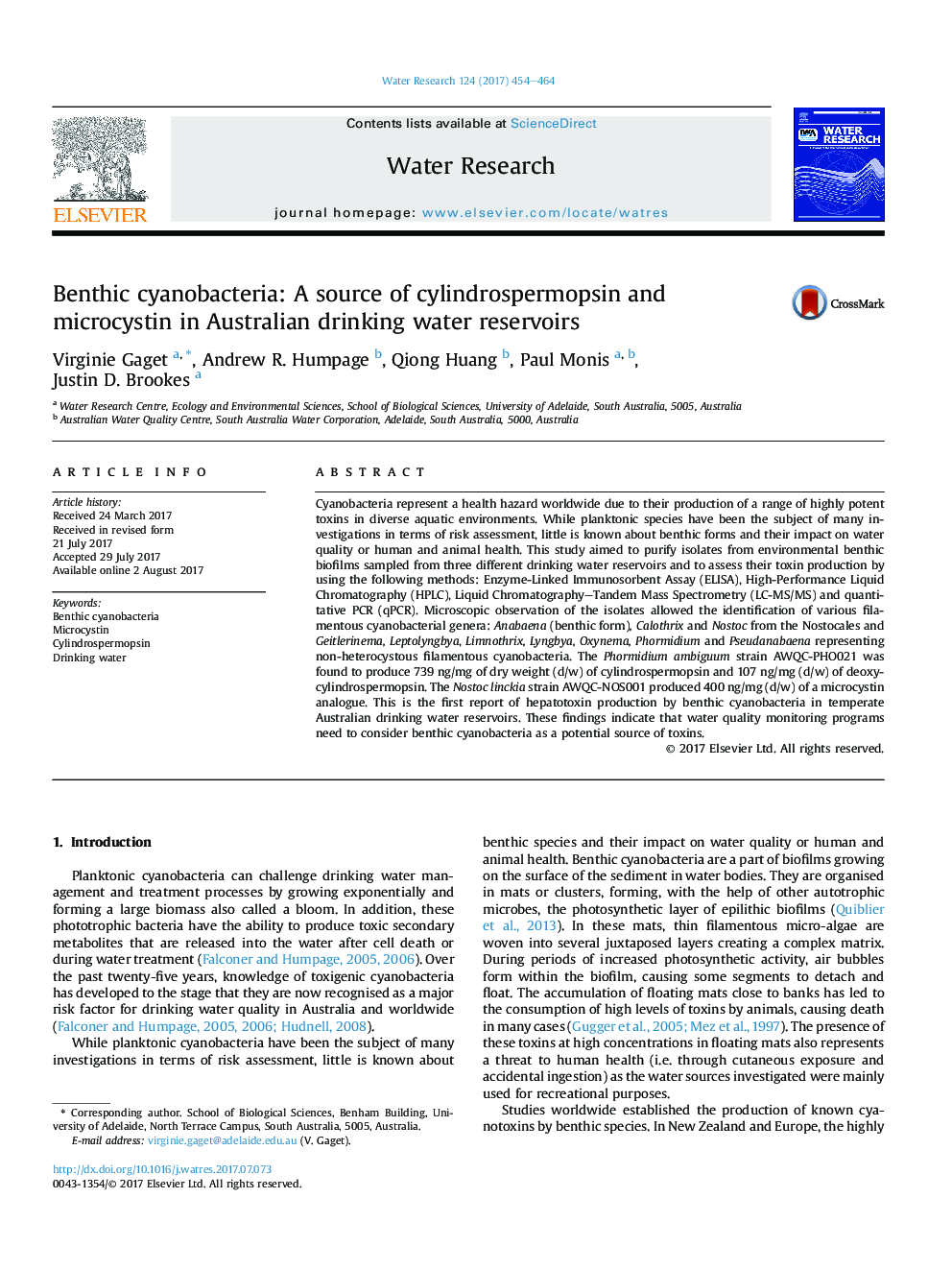| Article ID | Journal | Published Year | Pages | File Type |
|---|---|---|---|---|
| 5758744 | Water Research | 2017 | 11 Pages |
Abstract
Cyanobacteria represent a health hazard worldwide due to their production of a range of highly potent toxins in diverse aquatic environments. While planktonic species have been the subject of many investigations in terms of risk assessment, little is known about benthic forms and their impact on water quality or human and animal health. This study aimed to purify isolates from environmental benthic biofilms sampled from three different drinking water reservoirs and to assess their toxin production by using the following methods: Enzyme-Linked Immunosorbent Assay (ELISA), High-Performance Liquid Chromatography (HPLC), Liquid Chromatography-Tandem Mass Spectrometry (LC-MS/MS) and quantitative PCR (qPCR). Microscopic observation of the isolates allowed the identification of various filamentous cyanobacterial genera: Anabaena (benthic form), Calothrix and Nostoc from the Nostocales and Geitlerinema, Leptolyngbya, Limnothrix, Lyngbya, Oxynema, Phormidium and Pseudanabaena representing non-heterocystous filamentous cyanobacteria. The Phormidium ambiguum strain AWQC-PHO021 was found to produce 739 ng/mg of dry weight (d/w) of cylindrospermopsin and 107 ng/mg (d/w) of deoxy-cylindrospermopsin. The Nostoc linckia strain AWQC-NOS001 produced 400 ng/mg (d/w) of a microcystin analogue. This is the first report of hepatotoxin production by benthic cyanobacteria in temperate Australian drinking water reservoirs. These findings indicate that water quality monitoring programs need to consider benthic cyanobacteria as a potential source of toxins.
Related Topics
Physical Sciences and Engineering
Earth and Planetary Sciences
Earth-Surface Processes
Authors
Virginie Gaget, Andrew R. Humpage, Qiong Huang, Paul Monis, Justin D. Brookes,
